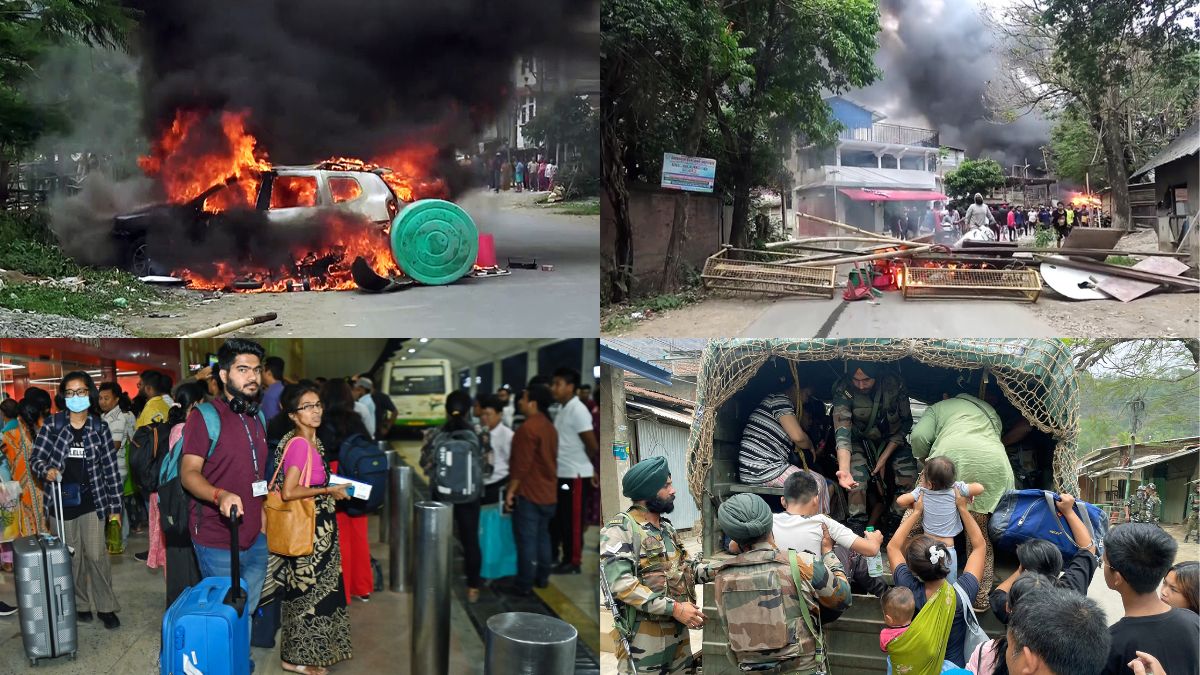Last week, A retired lieutenant general in India’s army expressed dissatisfaction with the state of violence in Manipur, a Indian state in the northeast.
The violence has left over 100 dead and over 400 wounded, with 60,000 people displaced and 60,000 in camps. 40,000 security forces are struggling to quell the violence, with only a quarter of the over 4,000 weapons looted by mobs being return.
Mistrust between the warring communities has increased, with both accusing security forces of being partisan. Over 200 churches and 17 temples have been destroyed or damaged, and homes of local ministers and legislators have been attacked and set on fire.
Normal life has been strangled

Night curfews persist in 16 districts, schools closed, internet services suspended, highway blocked, and sporadic killings and arson occur. Federal government’s peace panel proposal tepidly received.
Binalakshmi Nepram of Northeast India Women Initiative for Peace describes the darkest moment in Manipur’s history, with homes burned, people lynched, and tortured in just two days.
Broken dreams and burnt homes after India ethnic clashes

India’s north-eastern region, Manipur, faces ethnic violence due to its diverse and divided state with 36 ethnic tribes. Insurgent groups, Meitei, Naga, and Kuki, have waged armed campaigns against anti-insurgent laws and conflicting homeland demands. 17 peace talks have been ongoing to mediate between groups.
Manipur’s 3.3 million people are predominantly Meiteis, with Kukis and Nagas comprising 43% of the population. Ethnic clashes in the region have claimed hundreds of lives, with the current conflict rooted in ethnicity rather than religion. The violence was sparke by a controversy over affirmative action, but not entirely due to religion.
Thousands displaced as ethnic clashes grip Indian state

Tensions in the region arise from factors like insurgency, drug war, illegal migration, land pressure, and lack of employment, making young people vulnerable to rebel recruitment. Experts argue politicians’ complicity in drug trade and militancy ties contribute to the volatility.
The BJP-led Manipur government has launched a controversial “war on drugs” campaign targeting poppy farming, destroying over 18,000 acres since 2017. This has exacerbate divisions between Kukis and the government, with some villages being derecognise and receiving welfare benefits. Kukis have held mass protests against the government’s selective targeting of the community, accusing it of inciting insurgent groups.
Counting the dead in Manipur’s shoot-to-kill war

Manipur faces land pressure, with 60% of the population living on 10% of the state’s land in Imphal. Non-tribal people are resenting restrictions on land and preventing settlers from neighboring countries. Mistrust between people has been weaponized.
A dispute over two hills in the state arises due to conflicting claims of ownership between Meiteis and Kukis. The Meiteis view the hills as sacred, while the Kukis view them as ancestral territory. Prime Minister Modi has been criticise for silence.
Why Indian state of Manipur is gripped by violence

Ten of the 60 lawmakers in Manipur’s assembly are Kukis, and three ministers in Mr. Singh’s cabinet are also Kukis. The growing alienation between the two communities has led to a significant divide, with lawmakers and ministers from the ruling party unable to find common ground.
Subir Bhaumik suggests giving tribal groups autonomy could help defuse the crisis in Manipur. Tripura’s autonomous district council and Truth and Reconciliation Commission are examples of such initiatives. However, peace in Manipur remains precarious, with both sides enduring long confrontations.











More Stories
Kareena Kapoor, Saif Ali Khan rushed to be by Karisma Kapoor and her kids’ side at 2am after Sunjay Kapur’s death news
PM Modi In Ahmedabad: एअर इंडिया विमान हादसे की जगह पर पहुंचे प्रधानमंत्री; मंत्री-अधिकारियों से ली जानकारी
Air India Plane Crash in Ahmedabad: One survivor found, 241 passengers feared dead